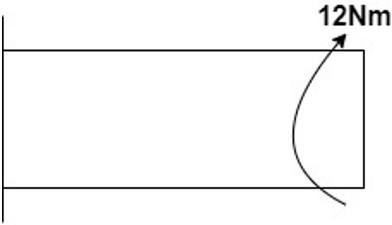This set of Finite Element Method Multiple Choice Questions & Answers (MCQs) focuses on “Scalar Field Problems – Torsion”.
1. What is the governing equation for a bar subjected to torsion?
a) d2Φ/dx2 + d2Φ/dy2 + 2 = 0
b) d2Φ/dx2 – d2Φ/dy2 + 2 = 0
c) d2Φ/dx2 * d2Φ/dy2 + 2 = 0
d) d2Φ/dx2 / d2Φ/dy2 + 2 = 0
View Answer
Explanation: The governing equation of a bar subjected to torsion is given by d2Φ/dx2 + d2Φ/dy2 + 2 = 0. where Φ = stress function. This equation simplifies the process of finding the shear stresses as a result of torsional loading.
2. The governing equation for a bar subjected to torsion is considered a special case of Helmholtz equations.
a) False
b) True
View Answer
Explanation: The given statement is true. d2Φ/dx2 + d2Φ/dy2 + 2 = 0 is considered as a special case scenario of Helmholtz equations. This set of equations represent a time independent form of the wave equation. They are also considered as the Eigen value of Laplace operators in mathematics.
3. What type of loading is depicted in the figure below?

a) Axial
b) Bending
c) Torsion
d) Tensile
View Answer
Explanation: The given figure demonstrates torsion type of loading. When the bar is subjected to twisting motion, it gives rise to shear stresses and torsional strain. This process is termed as Torsion. The SI unit is Nm.
4. Castigliano’s theorem states that the total derivative of strain energy gives rise to the displacement.
a) False
b) True
View Answer
Explanation: The given statement is false. Castigliano’s first theorem states that the partial derivative of strain energy with respect to any particular force gives rise to the displacement along that direction. This is valid only for linearly elastic materials.
5. Which of the following is a major assumption in torsion of circular members?
a) Plane sections do not remain plane after twisting
b) Plane sections remain parallel after twisting
c) Plane sections remain perpendicular after twisting
d) Plane sections remain plane after twisting
View Answer
Explanation: The first and major assumption in torsion of circular member is the fact that plane sections remain plane after twisting. This is valid only for elastic deformation that arises in circular members due to torsional type of loading. This assumption does not hold good for non circular members.
6. What is the direction of shear stress components at the outside surface of a torsion member?
a) Parallel to the surface
b) Tangent to the surface
c) Perpendicular to the surface
d) On the surface
View Answer
Explanation: At the outside surface of a torsion member, no stress acts normal to the surface. This is the reason why the shear stress components are assumed to act in a direction tangential to the surface. The value of stress function that arises is usually constant throughout the surface.
Sanfoundry Global Education & Learning Series – Finite Element Method.
To practice all areas of Finite Element Method, here is complete set of 1000+ Multiple Choice Questions and Answers.
If you find a mistake in question / option / answer, kindly take a screenshot and email to [email protected]
- Practice Civil Engineering MCQs
- Practice Mechanical Engineering MCQs
- Check Civil Engineering Books
- Apply for Civil Engineering Internship
- Check Mechanical Engineering Books
